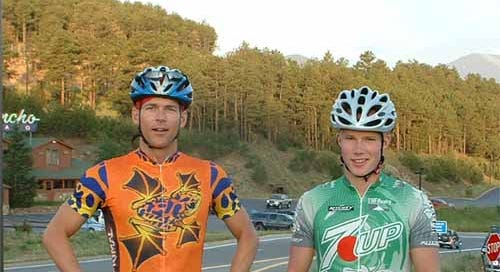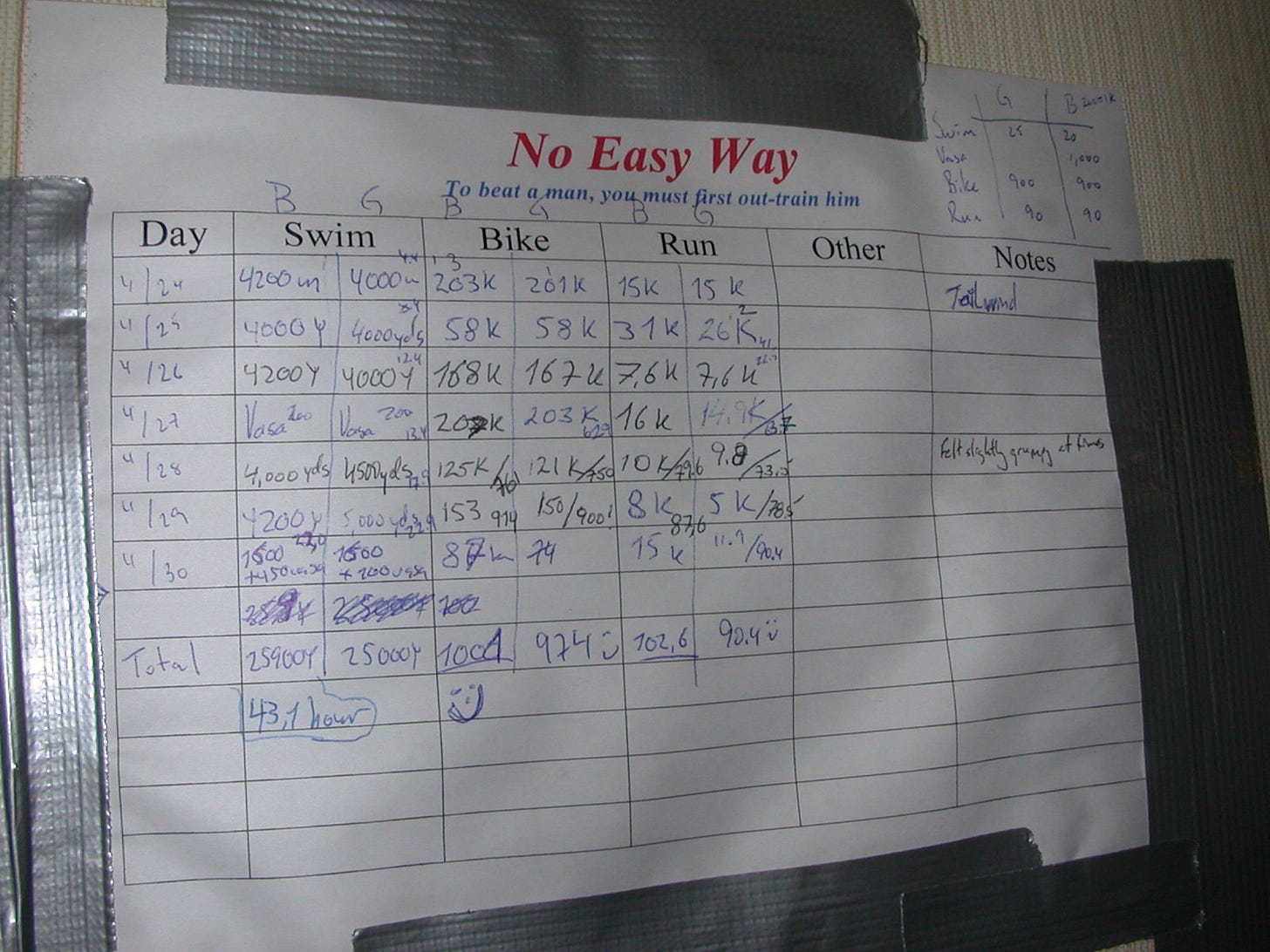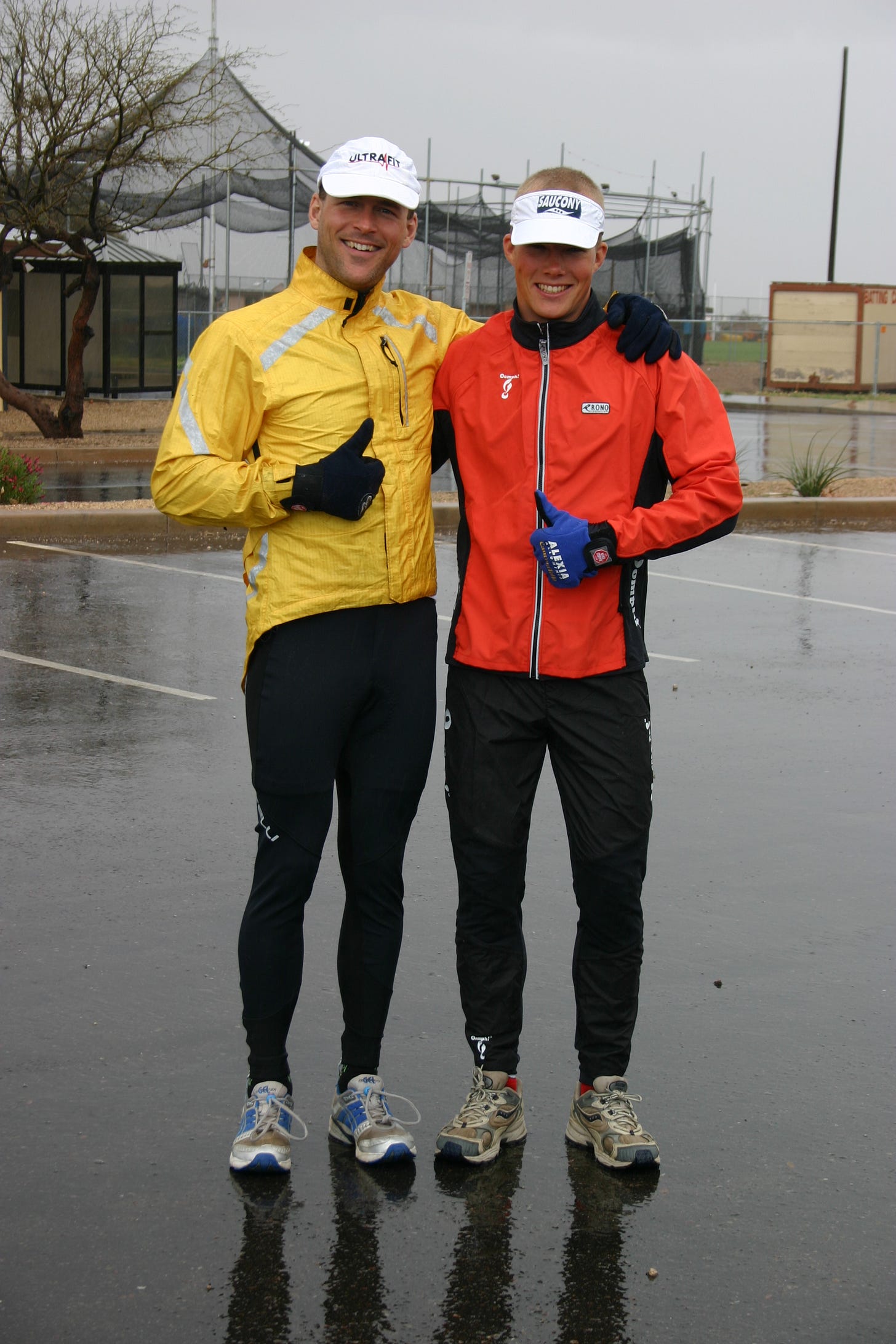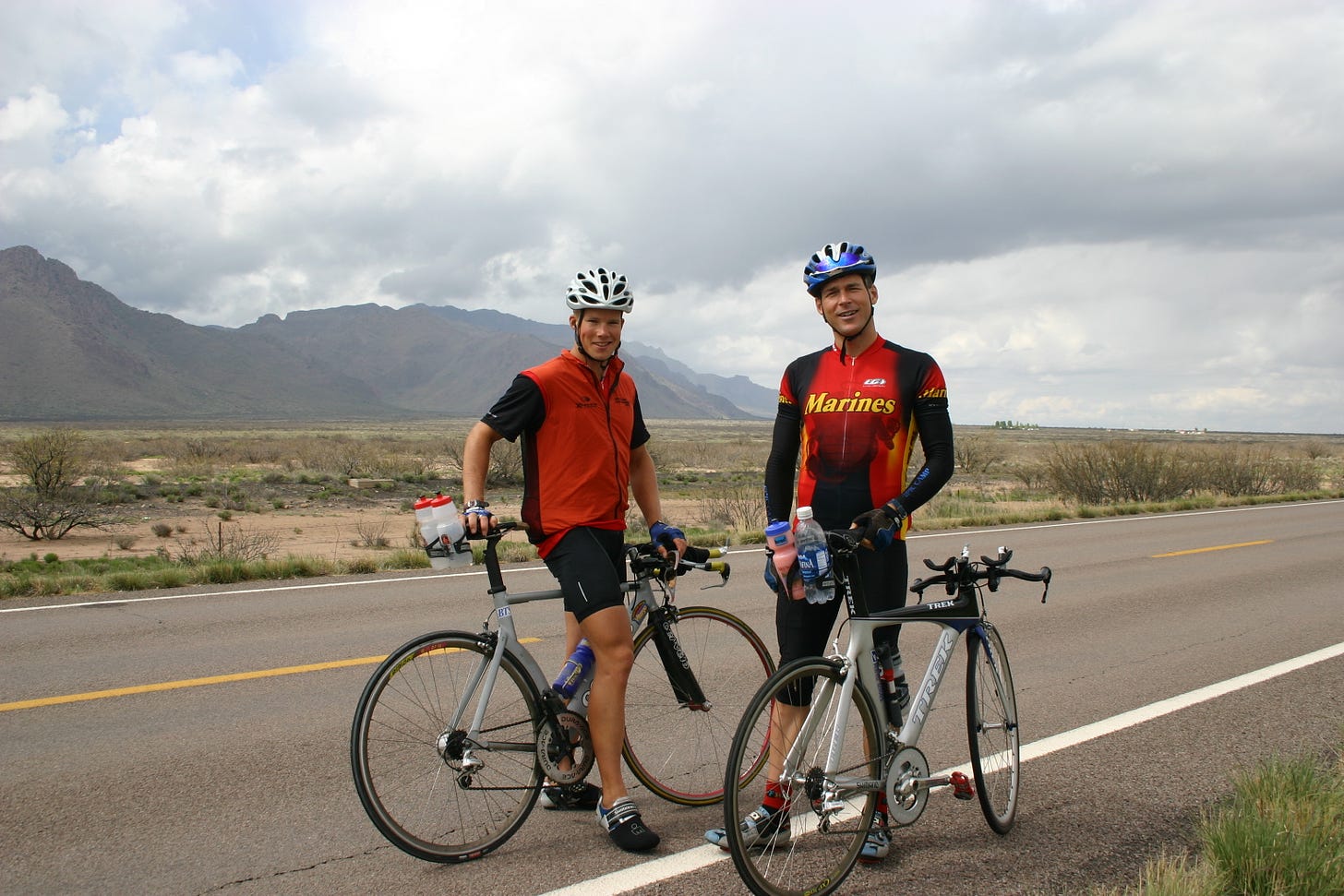Overtraining Syndrome and Adrenal Burnout - Part 1
Part One: Maladaptation Occurs Years Before Illness
Let’s start with good news.
You are extremely unlikely to get sick from exercise.
It takes a special mix of conditions to create overtraining syndrome.
However, you will underperform if you don’t pay attention to the signs of maladaptation.
Maladaptation Occurs Years Before Illness
Clas, and I, left performance gains on the table.
You don’t need to.
This is a big topic.
Conditions For Overtraining
Red Flags
Descent To Illness
Returning To Health
Your Wellness Team
If you need help then find:
A medical doctor with experience treating high-volume endurance athletes
A therapist, psychiatrist or mental conditioning expert
As you’ll read, Clas’ journey back to health was 10% physical and 90% mental.
Our mental work needs to dig deep
Identity
Addiction
Obsession
…and a belief system that’s making us sick. It takes courage to ask for help.
Without ongoing mental skills support, you will return to the pattern that made you sick.
Be open to the idea that you need a long break to regain your health and vitality.
Vitality is what you’re shooting for.
Vitality is what you had early in your athletic career.
Vitality can be yours, again.
This is not going to be a recovery measured in weeks.
More good news, I am going to explain how you avoid losing some of the best years of your life.
The Conditions For Overtraining
Most people don’t get sick from exercise.
They get rundown
They get hurt
They catch a virus
They lose interest
They take a break
The essential condition is a love of training and a massive General Capacity.
How Massive?
The during the second month of our Trans USA trip, we decided to do an overload block.
Clas was a month out from Ironman Brazil.
I thought it would be fun.
We called it The Big Push.
From my diary1
The Ride
Nothing special to report, 93K, 2:42, lots of rollers and some headwinds. Tonight we are staying at an RV Park near Chapel Hill, TN.
It’s a pleasure to arrive at 5PM and not feel wasted. I managed to get some work done. Excellent!
We are going to enjoy this reduced volume period. A few days and we should get pretty darn fresh.
The Baron pointed out that he’s got two risks for the rest of the trip:
doing too much, and
going too hard.
Not sure if I shared my totals from The Big Push…
Week 1 -- 2
Swim 23,000 -- 24,600 yards
Vasa 400 -- 200 reps
Bike 974 -- 1,069 km
Run 90.4 -- 90.0 km
Baron was higher for the bike and run – at least 100K of running each week.I told a buddy about our week and he commented that I am a “beast.”
Doing that massive amount of work has left me more centered and relaxed than I can remember being for a long time. About as far as I get from beast like.
To get ill from exercise, a “love of training” needs to transform into an obsessive addiction.
If you’re prone to addiction then you’ll have clues. You’ll have seen it in your life.
You may be using your exercise addiction to replace other, more negative, addictions.
As I said in my interview with Rich Roll, my experience of exercise is different. I get high.
Even after The Big Push, I felt “centered and relaxed.”
Stability in mood, sleep and nutrition are hallmarks of healthy loading.
Things go wrong when we move past healthy loading and setup camp in The Valley of Fatigue.
Our body, and brain, will give us plenty of warning signals.
Before we get to those warning signs, one last condition.
Relative Energy Deficiency in Sport (RED-S) - a syndrome of poor health and declining athletic performance due to chronic energy deficits.
My desire to be exceptionally lean led me to RED-S.
Lean is not a problem. Clas and I were lean for our elite careers.
Lean spills into the danger zone when an athlete:
remains exceptionally lean for an extended period of time
sets leanness as a goal, ahead of athletic performance
runs chronic energy deficits




What are the necessary conditions for overtraining?
Massive General Capacity
Obsessive Addiction To Exercise
Energy Deficits
Applies to myself, and every decent athlete I know.
How do I de-risk my training?
5:2 Loading - two back-to-back easy days every week, reset the body
Energy Balanced - stay at strongest training weight
Dynamic Loading - section to come, a thread below


Apply my system and enjoy exceptional gains from mistakes not made.
Red Flags
Before outlining what we don’t want to see happen, let’s consider what we do want.
Vitality - the athlete is enjoying their life
Stability - sleep, biomarkers, nutrition, body weight, mood
Improvement - positive adaptations
A useful heuristic from John Hellemans
One failed workout a week is not an issue. Two is the beginning of a pattern.
What John is telling us:
Don’t worry about one bad day.
Look for patterns.
The pattern you are looking for:
Hot & Cold Training
Erratic Race Performances
At the beginning of a downward spiral the athlete is fit, healthy and performing well. This is the most effective time to make an intervention.
Watch for:
Ravenous Hunger, particularly for sugar and starch
Night Sweats
Soreness, that doesn’t resolve with a reduction in load
Mood Swings: anger, sadness, despair, euphoria
Low-Grade Injury, especially if it feels better with exercise
Dental Abscesses
Cuts That Don’t Heal
Cold Sores
Elevated Resting Heart Rate
Breathlessness With Light Activity
The warning signals are fed by maladaptive stress.
High Load
Exercise Obsession, “it’s the only time I feel good”
Chronic Energy Deficits
It is challenging to step outside the obsession that’s causing the disfunction.
Why? Because, at the start of the process, performance is outstanding.
Two weeks before we started our Trans USA trip, Clas finished 2nd and I finished 4th at Ironman New Zealand.
In the build up to those performances, we experienced many of the red flags outlined above.
We accepted them as a cost of doing business.
In 14 days after the race,
I gained 15 pounds
I had 10 “don’t leave the room” days
I felt emotionally flat
The lesson staring me in the face => my stress load was greater than I could handle.
I continued to train, and race, at a world class level for another year.
Excessive fatigue was reducing performance gains.2
If you are experiencing warning signs:
Your Current Load Is Maladaptive
Drop Load
Find A Sports Doc & Mental Skills Expert
Get On The Right Side of Your Limit3
We didn’t drop load.
We saddled up, and rode across America.
In Part Two we cover the Descent To Illness.
Loading Is The Easy Part
Back To Table of Contents
If you are a friend, or coach, of an exercise-obsessed athlete then steer the conversation towards “more gains” and “better adaptations.” In my cohort, “higher performance” is an easier sell than “more rest.”
Nils van der Poel discusses The Limit is his excellent book, How To Skate A 10K. You’ll find my review here.








I remember the old Gordo World message board back in the day in addition to the “No Easy Way” another classic quote was “JFT”!! It was amazing the training load you guys were doing. Probably some good lessons about the red flags of huge volume in your Epic Camp blogs too.